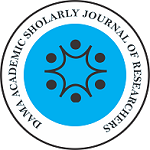1Francis Omane-Addo | 2David Ackah (PhD)
1Ghana Prison Service | 2Center for Excellent Training & Consultancy
Email: fomaneaddo@yahoo.com | drackah@ipmp.edu.gh
Abstract
The estimate of the global number of problem drug users provides the range of the number of people who need assistance to address their drug problems, including treatment of drug dependence and care (UNODC, 2014). Comparing this with the number of people who are in treatment provides the magnitude of the unmet need for treatment of illicit drug use. Notwithstanding the gap in reporting and coverage of services, Member States reported that between 42% (in South America) and 5% (in Africa) of problem drug users were treated in 2013(Ibid). It can be estimated that globally, between 12% and 30% of problem drug users had received treatment in 2013, which means that between 11 million and 33.5 million problem drug users in the world have an unmet need for treatment interventions. During the High-level Segment of the Commission on Narcotic Drugs in 2009, Member States adopted a Political Declaration and Plan of Action. The Plan of Action called for Member States to ensure that access to drug treatment is affordable, culturally appropriate and based on scientific evidence, and that drug dependence care services are included in the health care systems. It also called for the need to develop a comprehensive treatment system offering a wide range of integrated pharmacological (such as detoxification and opioid agonist and antagonist maintenance) and psychosocial (such as counselling, cognitive behavioural therapy and social support) interventions based on scientific evidence (UNODC,2014).
Keywords: Global Gap in Provision of Services, Problematic Drug Users

